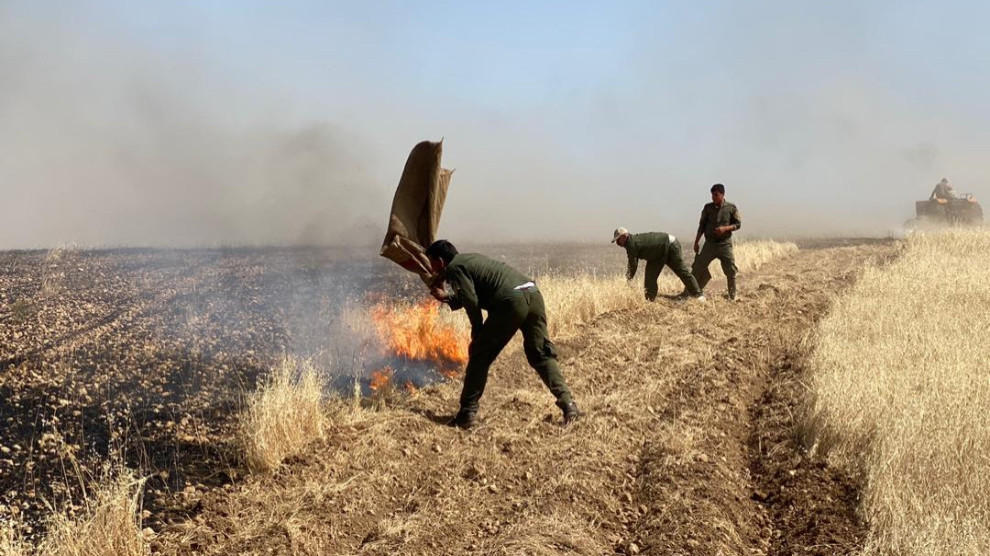Burning crops is a common strategy of repressive states. The Turkish State also regularly burns forests in occupied areas that refuse to submit to their rule. They often destroy villages in the process. On the one hand, this serves as collective punishment and as a warning to others. On the other hand, it is part of a wider strategy to displace the Kurdish population. By driving them into the cities, the Turkish State aims to break the community links and cultural history that the resistance relies on. Depopulating the countryside would also isolate the guerillas and open up opportunities for economic exploitation.
Last summer, Turkish forces brought this strategy to Rojava and North and East Syria too. Activating sleeper cells across the region, they burned vast areas of wheat. In the hot, dry summers wheat burns with incredible heat and speed. The Autonomous Administration bought the destroyed wheat at full price, absorbing the financial losses. But the deaths of farmers while fighting the fires, and the psychological impact of the devastation, have hit rural communities hard. So it was no surprise when crop burning resumed this summer.

The main difference this year has been the openness with which Turkish forces are acting. It is unclear if this is caused by losses to their networks in Rojava (SDF Forces have carried out a sustained counter-insurgency campaign, and at the same time the effective governance of the Autonomous Administration continues to win the support of previously opposed sectors of society), or by the realisation that they will not be held to account for their attacks. Most of the fires this summer have either been from artillery fire onto fields, or from Turkish forces setting light to crops at the border when the wind is in the right direction, so that the fire spreads into SDF-held fields. Firefighters responding to the arson are then shot at by those same troops, preventing them from extinguishing the fires.
Setting fire to crops on their side of the border might seem like a risky strategy. But when understanding Turkish strategy, it is important to realise that Erdogan would rather rule a wasteland than allow any of the former Ottoman empire to escape his grasp. We saw this clearly in 2015, when Turkish troops utterly destroyed several cities in Turkish-Occupied Kurdistan, and then posed for photos in the ruins. For 40 years, the people of Kurdistan have shown that they will never bow to fascism. Erdogan’s response is clear – he intends a full ethnic cleansing of Rojava, to drive the people south into the desert to die.

With the economic embargo, fears of Corona affecting trade, and US sanctions on Syria, importing food into Rojava is increasingly hard. As arson and occupation look to squeeze the food supply even further, the people of North and East Syria are bracing themselves for a difficult year.